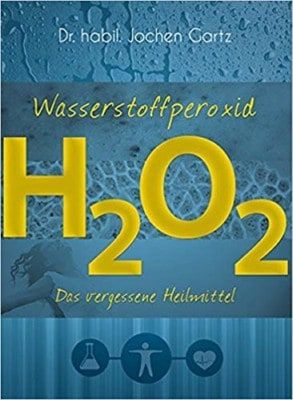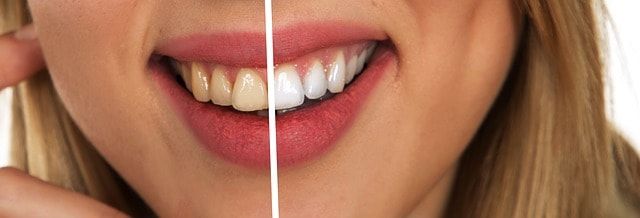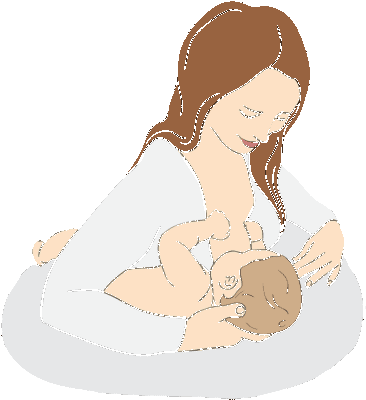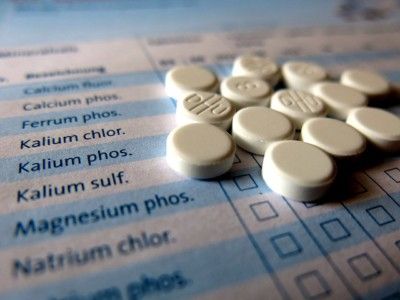Hydrogen peroxide – An old medicine with fascinating and new application possibilities
Among the many alternative active substances, hydrogen peroxide is the only one that has been generally recognized for over 100 years. It is also dispensed with “official monograph” by pharmacies without prescription.
This hydrogen peroxide with the simple formula H2O2 but appears there only in a tiny area of application, namely wound cleansing with very low concentrations.
However, since about 1880 very many and extensive areas of application have been developed, which today have been forgotten again completely unjustly and now have even more topicality than before.
If one speaks with physicians about the medicine study, then one hears conformal that the hydrogen peroxide is mentioned at the most with the wound treatment in passing. In the process, 50 years ago, the foundations for a modern, expanded application were laid by extensive basic German research.
Hydrogen peroxide has been known for 200 years.
Unfortunately, the basic German studies are not known even in the American alternative literature, nor do they appear in the uncritically used ,German compilations of U.S. work that appear from time to time.
Even the American alternative writings do not have a complete overview of their history of the use of peroxide.
History of hydrogen peroxide
In 1857, the then famous English hygienist Benjamin Ward Richardson (1829-1896), who was ennobled by Queen Victoria, discovered that wounds heal much faster and without infections when they are moistened with peroxide. The oxygen evolution also cleaned the wounds by repelling dirt particles.
Since at the same time Joseph Lister (1827- 1912) also introduced carbolic acid (phenol) in England as a general disinfectant, Richardson’s discovery was pushed into the background. Phenol could also be produced technically. Soon, however, it was recognized that this substance was quite toxic and could not be used on mucous membranes either.
Then other, milder disinfectants were searched for. This development was also related to the great success of the discovery of pathogenic bacteria, which could now be cultivated in vitro thanks to the findings of Louis Pasteur (1822- 1895) and Robert Koch (1843- 1910).
Here then could be added to the culture medium in the glass vessel the agents and tested their inhibitory effect on the bacteria. The excellent effect of hydrogen peroxide was observed. Around 1870 the large-scale production of the substance began.
Thus, from 1880, especially in the USA, the extensive use of peroxide in medicine was begun and many applications were quickly developed In a short time, hundreds of articles with treatment successes also appeared. Comparatively, aspirin did not come on the market until 1897.
In the course of clinical research, it quickly became clear that the substance was effective, non-toxic and had no irritant effect. To date, no allergies have been detected, as only a decomposition into water and oxygen occurs and the peroxide itself is a physiological substance .
Fields of application of hydrogen peroxide
In the classical investigations, success was achieved mainly in the following areas:
Respiratory System:
- Bronchitis, pneumonia, laryngitis, revenge, tonsillitis, influenza, acute and chronic rhinitis, associated with it also ear infection.
Mouth:
- Gum inflammation and incipient caries, “rot” (bacterial or yeast infection).
Skin:
- Skin infections of any kind, boils, carbuncles (after surgical opening), itchy eczema and psoriasis, acne, “foot eczema” (with rapid success, today to be called athlete’s foot).
- Acute and old wounds that would otherwise not heal.
- Rapid regression of pustules in chickenpox (virus!), as well as for cold sores.
- Toxic (allergic) effect of poison oak and poison ivy, rapid action.
- Stings of insects (rapid elimination of itching and decongestion, also for hornet stings).
Hydrogen peroxide can render substances formed during inflammations harmless by oxidation, which is in addition to the pure disinfection effects.
It is effective against foul odors, which could be eliminated even in uterine cancers. Until today this application has been completely forgotten. In care guidelines for breakthrough breast cancer, this leaves one helpless and emphasizes that the stench that occurs is socially isolating.
Internal use:
This was done in small quantities and diluted, was thus harmless and worked against gastritis, cholera and typhoid fever.
It is also worth noting that it is taken as a preventive against yellow fever (virus).
In the wake of the development of sulfonamides and especially antibiotics, a euphoria set in that prophesied that bacterial infections would soon be eradicated. In connection with this, established local treatments were pushed back and even disinfection was neglected in the hospitals of the 1950s, a fact that is still responsible for tens of thousands of deaths in hospitals today, coupled with the resistance to various antibiotics that has developed.
Thus, remedies that retain their efficacy unchanged even with a wide variety of pathogens are of great interest today. Here the hydrogen peroxide can play a leading role.
Today we know that it is formed everywhere in the body during sugar metabolism and exerts a wide variety of effects as a signal substance in plants, animals and humans .
It is also now known that granulocytes, a form of white blood cells, use hydrogen peroxide to defend themselves against pathogens. Due to this natural occurrence there is also no resistance to peroxide applied externally.
The latest findings finally prove that hydrogen peroxide stimulates the immune defense system.
From the historical to the present application
The historical use of peroxide makes it clear that there are “waves of therapy” in medicine that recur about every 50 years and become modern again under a different guise.
At the end of the 50’s, German researchers rediscovered peroxide beyond wound cleansing and finally carried out exact investigations to study its physiological effect and to carry out new therapies even with higher concentrations.
The starting point was research conducted during the habilitation of R.Ludewig in Leipzig.
First, the behavior of peroxide when applied to the skin was tested in concentrations up to 30%. It was found that, contrary to the opinion of many textbooks, no chemical burn occurs.
Under the direction of the famous pharmacologist F.Hauschild (1908-1974) was able to prove histologically on animal and human skin that hydrogen peroxide quickly penetrates the skin almost unchanged and only in deep tissue the decomposition by the enzyme catalase into water and oxygen takes place.
This allows oxygen to be brought into the organism easily and safely. At higher concentrations, a white coloration can be observed on the skin along with a tingling sensation, followed by intense reddening. These phenomena indicate beyond a “chemical burn” only that the oxygen is visible as a white spot.
The gas can be detected in the tissue layers for up to 24 hours and is gradually used by the body as a source. The tingling and reddening indicate a strong promotion of blood circulation.
This effect led to an excellent therapy of circulatory disorders, especially of the legs, which are widespread and have as risk factors mainly diabetes and smoking. The ointment used contained 10 to 20% hydrogen peroxide, usually applied every 2 days in the morning.
This exceptionally simple and hazard-free therapy, which was presented in many articles by the authors, was also ignored and is unknown today. Only later alternative US books describe that foot baths with the usual 3% solutions stimulate the blood circulation. As usual, the users know nothing about the German investigations. Also, such books do not show knowledge about the effect of higher percentage preparations.
This treatment of severe circulatory disorders can also prevent the dreaded gas gangrene, with the addition of a strong antibacterial effect, especially on bacteria that grow without oxygen (“anaerobes”).
The German studies also proved the absence of resistance. On the contrary, in the case of leg ulcers, a better response of the pathogens to antibiotics was observed after peroxide application. This is probably a real possibility to overcome resistance in severe lung infections in combination with peroxide spray.
It is remarkable that this has not been tried yet, although there is no danger at all. Here again there is an ignorance and/or ignorance.
Particularly interesting are also the German studies on the inhibitory effect against various pathogenic fungal species. Here the foundations were laid to treat fungi in the skin cheaply and effectively. The treatment is also particularly effective by stimulating blood circulation, since it is precisely recurrent fungal infections that occur in feet that are poorly supplied with blood and are damp and cold.
In studies on the inhibition of viruses, hydrogen peroxide was able to inhibit all tested viruses. Thus, the substance acts as a broad-spectrum agent against the entire spectrum of pathogens without development of resistance.
The effect against viruses is also particularly interesting in throat infections, at least 80% of which are caused by viruses and are therefore inaccessible to antibiotics or conventional lozenges. This explains the early great successes of American physicians in the treatment with 1 – 3% spray.
In the German investigations also remarkable successes in the mouth and tooth area were reported, which, independently investigated, correspond to the old experiences and were confirmed today also .
A fascinating field is also the treatment of vaginal infections, which are very troublesome and are caused by various pathogens. There are long courses and with the treatment of the bacteria yeasts can appear, which again make antimycotics necessary.
Cordone and co-workers reported in 2003 from Italy that the simple 3% solution, applied on absorbent cotton, shows a very effective, simple and cheap effect on the infections. They were enthusiastic about the rapid restoration of normal pH and the disappearance of the odor caused by the bacterial products. In the end, however, they have only reinvented the bicycle, since the effect was already known around 1890.
In the meantime, many laymen have used the peroxide themselves with success, and as a rule, no relapses occurred later, if the treatment was continued for one to two weeks after the symptoms had subsided.
Internal use in a highly diluted form
Internal ingestion of very small amounts of hydrogen peroxide in a highly diluted form also represents an interesting, if still mysterious, prophylactic and therapeutic option. There are different views as to whether it developed in the 60s in Russia or the USA.
However, this absorption was also common more than 100 years ago. There have been reports of yellow fever prevention as well as its use as an adjunct to local therapy for various diseases, including ENT.
This treatment is in the milligram range and so the amounts of oxygen sequestered are minute and cannot contribute to the body’s oxygen balance such as significant absorption through the skin. Thus immune effects are very likely. Under no circumstances should larger amounts of 3% solution or even higher concentrated solutions enter the stomach.
Beyond a corrosive effect, a sudden development of oxygen can cause internal tearing in the tissue. In contrast, the internal prescriptions in the sense of a few drops of 3% solution on a glass of water are considered completely harmless, but taste disgusting.
Fields of application are arthrosis, cardiovascular diseases, exhaustion and further indications which have not yet been proven.
One can only approach the phenomenon by pointing out preparations that are freely available in Central Europe and also in Germany, which are used by alternative practitioners.
The magnesium salt of hydrogen peroxide, which reacts with acids (gastric!) which releases peroxide, is slurried in water as a non-toxic, tasteless substance and used in amounts of 2 to 6 g per day for intestinal cleansing and detoxification. In smaller quantities (0.5 to 1 gram), the package insert of preparations 40 years ago stated as indication: dullness. So exactly a symptom that today is supposed to be treated by the intake of the free peroxide.
Therefore, such commercial preparations with magnesium peroxide as Ozovit can be used, and an enclosed dosage spoon allows convenient application.
For use in cancer therapy
In the German investigations, fundamental knowledge about cancer therapy could also be gained, which was only completely independently rediscovered in Japan 50 years later.
The investigators found that after pretreatment with hydrogen peroxide ointment, skin tumors (basal cell carcinomas) require only half the dose of point irradiation with X-rays to be destroyed, compared to therapy without peroxide .
The procedure did not become widespread due to ignorance and non-knowledge, and so it was only rediscovered in Japan from 2006 onwards, completely independently and with great success.
One must therefore conclude that by not following this German approach, there have been thousands of unnecessary casualties over the last 50 years.
Compare also the many expensive sucking and gargling means, which do not work all against viruses, with the simple hydrogen peroxide spray of one to three per cent, which costs for the daily application only around the one cent, affects all pathogens and causes beside immune effects also still another improved blood circulation.
In the US-American literature the purity of peroxide is strained and allegedly only 30% “food grade” peroxide is applicable after dilution because of its purity. This is not true for Germany. The 3% preparation from the pharmacy is applicable. Here are only very small amounts of phosphoric acid for stabilization, which are also allowed in cola and many food products.
Care should always be taken to avoid bleaching colored textiles and hair (bleaching), and spraying in the eyes should be strictly avoided.
Author: Dr. habil. Jochen Gartz
Book recommendationen
Dr. habil. Jochen Gartz
Hydrogen peroxide: The forgotten cure
Paperback: 210 pages
Publisher: MobiWell (1. January 2014)
Language: German
ISBN-13: 978-3944887074
More information and ordering
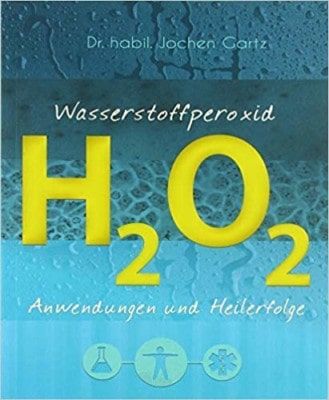
Dr. habil. Jochen Gartz
Hydrogen Peroxide: Applications and Healing Successes
Softcover: 160 pages
Publisher: MobiWell (1. October 2018)
Language: German
ISBN-13: 978-3944887487
For more information and to order
Literature
12
23 Alvarez,O.M.: “Benzoyl peroxide and epidermal wound healing” in Archives of dermatology 1983, 119: 222- 225
24 Meshnick, S.R. et al.: “Artemisinin and the Antimalarial Endoperoxides: from Herbal Remedy to Targeted Chemotherapy” in Microbiological Reviews 1996, 60: 301- 315
25 Berger,T.G. et al.Artesunate in the treatment of metastatic uveal melanoma- first experiences” in Oncology Reports 005,14: 1599- 1503
26 Yamachika,E.et al: “Artemisinins: An alternative treatment for oral squamous cell carcinoma” in Anticancer Research 2004,24: 2153- 2160
27 Levevre,R. et al: “Chimiotherapy Anti-Cancereuse” in Acta Unio Internationalis Contra Cancrum 1960, 16: 887- 900
